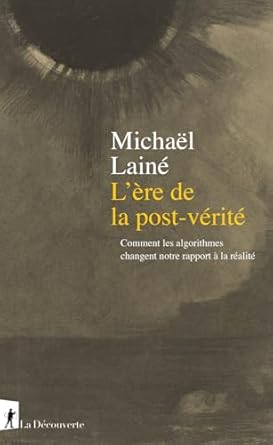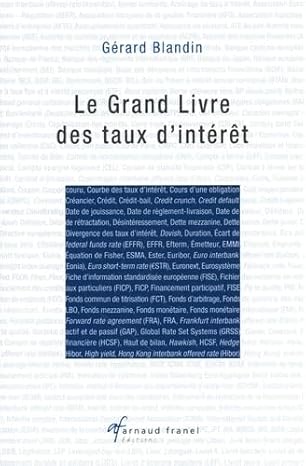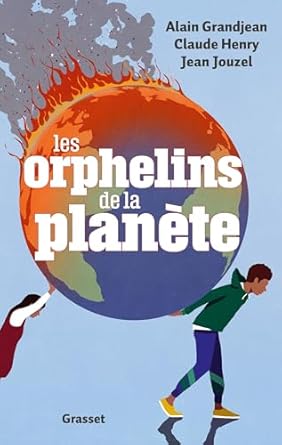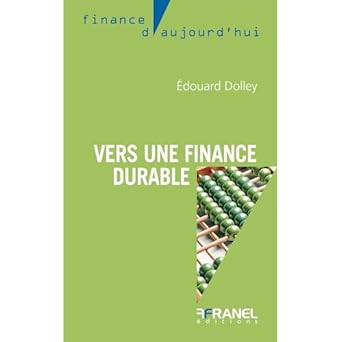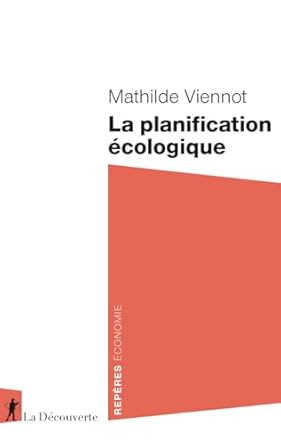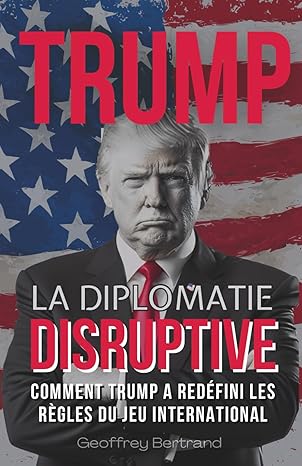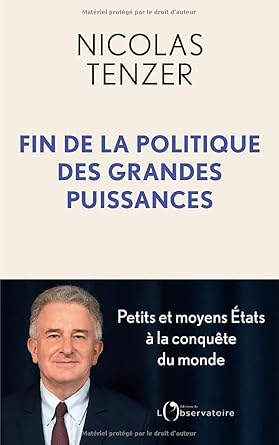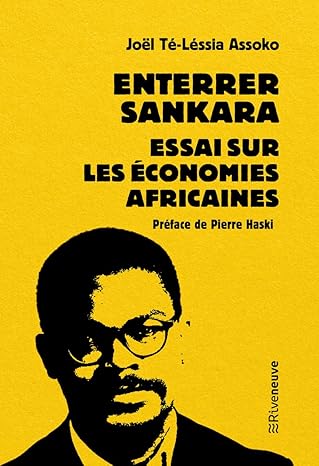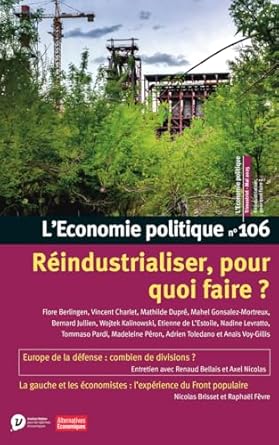The author offers his vision on the genesis, influence, and evolution of this current of thought in the political and economic sphere of a part of the world, in particular Europe. If environmental awareness has always been correlated to mankind in various forms, it experienced a boom with the beginning of industrialization and the emergence of the first theses on the need to regulate the world population. The Environment becomes, over the course of events, the matrix of more identity-based and more radical currents. This is how, at the end of the 19th century, the word “ecology” was born, to designate the “scientific discipline which studies the natural environments as well as the relations and interactions between the living beings and these environments”. Very quickly, “ecology” deviates from this definition and their representatives, ecologists, to become a messianic movement based on a quasi-religious rhetoric. The new “ecology” is based on the concept of “imminent global systemic crisis”, fueling its rationality and justification on materials provided by the news: acid rain, nuclear risks, overpopulation, the ozone layer, greenhouse gas emissions related to human activities, energy transition… Each theme is the subject of active advertising via broadcasting and popularization relays: NGOs, Conferences/Debates, ad-hoc Commissions, media, experts of all kinds, reports/theses. Funding is legion through international organizations, governments, contributions, bequests/donations… It is worth noting the remarkable plasticity of the approach: Each new theme drives out the previous one, as was the case with acid rain, overpopulation, the ozone layer, nuclear power… Global warming is the new battlefield for environmentalists, fueled by a number of reports, including those of the IPCC. The European Union is among the good students on its territory but is less concerned about the possible environmental damage of its international suppliers, the global impact study being mainly reserved for its own nationals. This virtuous approach of the European Union is not, for the moment, imitated by its direct competitors (United States, China, India, Brazil…) less hampered by the norms and beneficiaries of our environmental challenges which translates, for the European Union, into an impoverishment, a “soft” decline, a deindustrialization, a loss of sovereignty, and an over-indebtedness for some. Can this asymmetric competitiveness gap, to some extent, explain the decline of Europe and its erasure in this new world? The author’s final optimism is based on an awareness of the European Union’s economic, social, and political issues, but also on the gradual disappearance of ecology as a dominant thought by its inability to anticipate and solve problems. Bertrand ALLIOT, actor of the environmental movement. Former ecologist and columnist. Published “Une histoire naturelle de l’homme” (A Natural History of Man). Ed. de l’Artilleur in 2020. Hubert Alcaraz
Michael LAINE, L’ère de la post- vérité Comment les algorithmes transforment notre rapport à la réalité, Editions La Découverte 2025.
A big hat tip to the author of this book, which addresses the theme of the impact of digital transformation from a very global perspective, combining technology (including artificial intelligence), social networks, sociology, psychology, and philosophy. The book, very powerful in terms of brain stimulation, requires a consequent effort to measure all the richness and to provide the reader with keys to master a relationship with “reality”. In fact, new technologies largely exploit the human brain’s propensity to cling to preconceived ideas. They strive to fulfill ever-increasing desires fueled by virtual messages carried by multiple digital niches. The damage caused by poorly or insufficiently regulated tools is considerable, with the risk of losing critical thinking, whether in the business world or in personal life. The providers of “cyber information” – for example, AI – know very well how to exploit the mechanisms of information absorption by individuals. These mechanisms include a large part of positive or negative emotions, such as fears. Very often, consumers of biased and targeted information to generate, for example, buying behaviors, lose their ability to discern. A very significant risk is linked to the rigidification of thought polluted by fake news of all kinds, which shuts down certain parts of the brain and can lead to inappropriate decisions. Advertising and Artificial Intelligence make extensive use of the psychological levers mentioned above. The author underlines the absolute urgency of strengthening global governance in the face of the risks of “cyber capitalist” societies. This is a very powerful book that warns of considerable economic, societal, and human risks. Denis Molho
Gerard BLANDIN, Le Grand Livre des taux d’intérêt, Arnaud Franel Editions, 328 pages.
The Grand Livre des taux d’intérêt (The Great Book of Interest Rates) is an encyclopedia of finance that not only covers rates – the “most important figures in the modern world” – but also all instruments, institutions, procedures, events… of modern finance. The book includes both alphabetical entries by concepts and acronyms, as well as focus sections (especially historical) and quotes from famous financiers, references to the sources consulted, and references to related concepts. It is solidly structured and is written in a clear and precise style. It demonstrates that the traditional book format, when well constructed, is more didactic and practical than online consultation of a search engine, even one enriched by AI. It is also an opportunity to organize useful financial literacy quizzes. Gérard Blandin’s book summarizes in only 328 pages the sum of knowledge that all practitioners, teachers, and students in finance must fully master, and that savers and financial investors must at least partially know. The reader of the Grand Livre will discover several hundred abbreviations and acronyms, regulatory texts, and names of famous financiers and politicians, who are or have been essential in the functioning of monetary, financial, and accounting systems. The Grand Livre is not only practical; it attests to the complexity of contemporary finance and delivers a subliminal message about the unparalleled creativity of financiers, the speed of change in finance, and the importance of its economic and social utility.A graduate of Sciences Po Paris, Gérard Blandin has over thirty years of experience in the field of investments. He has led the editorial teams of several financial weekly publications and is the author of about fifteen works on the stock market, real estate, collective management, and market finance. Jean-Jacques Pluchart
Alain GRANDJEAN, Claude HENRY, Jean JOUZEL, Les orphelins de la planète, Eds Grasset, 186 pages.
The authors respond to the main questions raised for more than ten years by the impacts of global warming and by energy and ecological transitions. They recall the alarms launched since 1990 by the IPCC and other official bodies, as well as the ambitions (often disappointed) displayed in the 29 Conferences of the Parties (COP) organized since 1995. They stress the importance of the COP 21 held in Paris in 2015, which set the goal of limiting global warming to 1.5°C by 2030 and achieving carbon neutrality by 2050. The authors reveal that the IPCC reports have been the target of a real climategate, orchestrated by the energy companies, which have tried to discredit the IPCC’s data, processing, and conclusions through complacent studies. They also denounce the banks that continue to finance projects that harm the environment. They point out that the multiple consequences (especially on human health) of greenhouse gas (GHG) emissions are better documented and that a warming of 3°C, or even 4°C, would be catastrophic for the planet and humanity. They warn of the severity and simultaneity of the latest natural disasters (drought, floods, etc.). The authors are optimistic, however: they identify the devices to be implemented in order to achieve the objectives set by the COP: new instruments of “green finance”, alternative systems of heating, transportation and production, ecological materials… They show the progress of agroecology to preserve the soil and absorb GHGs, as well as the emergence of geoengineering that extracts carbon monoxide from the atmosphere. They hold up European countries as examples for the least energy-efficient nation-states, such as China and the United States. Alain GRANDJEAN is the co-founder of the firm Carbon 4. Claude HENRY is an honorary professor at the Ecole Polytechnique and the University of Colombia. Jean JOUZEL was a member of the IPCC. Jean-Jacques Pluchart
Edouard DOLLEY- Vers une finance durable – Arnaud Franel Editions – 314 pages
The book is interesting in more ways than one: educational, practical, inspiring. You can’t do sustainable finance without doing finance first! This book introduces the main concepts of corporate and market finance, then explains how these concepts are relevant to sustainable finance. Each chapter focuses on a financial concept: wealth, interest rates, returns, balance sheets, asset portfolios, arbitrage, derivatives, and even crypto-assets! This book thus provides a bridge between “traditional” finance and sustainable finance. That covers the educational aspect. It is practical thanks to its original format. In each chapter, the concepts are explained by teachers and practitioners: CFOs, central bankers, commercial bankers, investment bankers, managers, trading room managers, appraisers, accountants, auditors, business leaders, and more. We learn that concepts such as IRR, required rate of return, risk-free rate, company buyouts, arbitrage, CAPM, options and derivatives, and extra-financial valuation are applicable to the models and functioning of sustainable finance. The book is inspiring because it is not a pro domo plea for sustainable finance. On the contrary, the choice of interviewees leads us to question the current systemic limitations: difficulties in determining the rate of return on an ESG project and calculating environmental value, the intrinsic value of carbon, questions about regulations and SRI evaluators, etc. Each chapter includes a conclusion in a few points that summarizes the previous discussion and raises questions, an inspiring format! Natural and social capital cannot be reduced to numbers, but numbers are essential and it is crucial to collect reliable data. And “classic” financial concepts provide a solid foundation that can be adapted to the analysis of broader issues, particularly sustainability. The author rightly asserts that the green and sustainable transition will require a return of trust, governance, and value, and the current difficulties are not overlooked. Regarding trust, E. DOLLEY affirms the need to develop blockchains. Given their energy consumption, this point seems counterintuitive, but the arguments put forward are strong. The traceability of funds invested in projects, the reliability of upstream data that is so difficult to obtain that the OMNIBUS Directive has limited the obligations to obtain it, and “certified” renewable energy sources would justify and satisfy the information needs of economic agents. This book does not develop ready-made solutions, but it provides a kind of serious and accessible compendium. Thus, the transition would be driven by a “bottom-up” approach, as the top-down approach has, according to the author, reached its well-defined limits. Dominique Chesneau
Mathilde VIENNOT, La planification écologique, La découverte (repères), 126 pages.
The French planning of the Glorious Thirty, initiated by Jean Monnet, has given way to a new form of more global and sustainable planning: “ecological planning”, which focuses on the objectives to be achieved and the resources to be implemented in order to ensure energy, ecological, economic and social transitions, by 2030 and 2050. The author shows the diversity of devices to be mobilized, conventions, laws, decrees and standards to be defined in order to establish a “frugal, carbon-free, circular and sustainable economy”. The ecological, economic, and social issues are intertwined and most of the constraints – especially sectoral and territorial – often provoke contradictory reactions from the many social actors involved. This is why the author believes that the transition involves a “democratic renewal”, especially in France. Mathilde Viennot compares the different modes of planning throughout history: Soviet-style authoritarian, French-style indicative, incentive-based in the context of the New Deal, etc. She analyzes the scope and especially the limits of the conventional parameters that underlie economic projections (discount rate, GDP, debt, etc.). She highlights the difficulty of arbitrating between market regulation and the regulation of production and consumption. She believes that ecological planning is based primarily on more sobriety in the ways of housing, moving, and feeding. She compares the different estimates of the necessary over-investments (in 360 and 416 billion euros per year in Europe by 2030) and analyzes the necessary financial arrangements, then deduces that the Union and the European States will have to be at the same time “treasurers, compensators, architects, co-investors, and collectors”.The author demonstrates an exceptional sense of analysis and synthesis on one of the most complex and essential contemporary issues. Mathilde Viennot (ENS, PhD in Economics from EHESS) is a member of France Stratégie. Jean-Jacques Pluchart
Geoffrey BERTRAND, La Diplomatie Disruptive. Redéfinir les règles du Jeu International, eds GB, 2025, 186 pages.
The book is in the form of a lecture on diplomatic negotiation aimed at overcoming the conventional approaches in use in all embassies. The author apparently delivers his (overly) rich experience of diplomacy in order to “decode the paradigms” that underlie international relations, to deduce that the “disruptive diplomacy” initiated by Donald Trump constitutes an irreversible “diplomatic revolution”. The latter is based on “the Art of Calculated Unpredictability”, which exploits uncertainty as a strategic lever, and “orchestrates new unexpected diplomatic pivots”. The approach, accompanied by direct language and a sometimes brutal style, aims to “reorient the negotiation” by breaking its formal framework and to give priority to efficiency over the maintenance of established positions and respect for principles. It favors bilateral relations over multilateral exchanges, inter-state dialogues over international forums. It also involves “the conquest of the information space” (including messages in the press and social networks, before, during, and after the diplomatic agenda. However, it must be applied “intelligently” and must be adapted to the cultural context of each negotiation, in order to avoid the authors being discredited. The author proposes that France adopt the “Trumpian strategy” without delay in order to preserve its diplomatic heritage and maintain its influence in the world. This advice is all the more risky as the long-term benefits of the “Trumpian method” have not yet been demonstrated, which has already resulted in the reform of the “Global South” bloc of countries. The legendary caution of diplomats invites us to seek a compromise between the conventional protocol and the new disruptive method.Geoffrey Bertrand is apparently a pseudonym that masks the identity of a diplomat or consultant, a journalist or a trainer in geopolitics and/or negotiation techniques… unless it covers a clever simulation designed by an AI algorithm that would have passed the Turing test. Jean-Jacques Pluchart
Nicolas TENZER, Fin de la politique des grandes puissances, Eds L’Observatoire.
Nicolas Tenzer’s latest book delivers a useful lesson in international diplomacy after the upheavals caused by the wars in Ukraine and Israel, as well as by the MAGA movement in the United States. These phenomena have disrupted the international order established at the end of the Second World War and have made relations between the blocs more unlikely. The author strives to map nation-states according to their balance of power. He logically ranks the United States and China among the global powers, but he considers them to be losing momentum. He describes Russia and the former colonizing countries such as France, the United Kingdom, Spain, and Italy as trans-regional powers (he does not clearly state the status of Germany and Japan). He estimates that a dozen states, such as Turkey (whose politics are studied at length), Mexico, Brazil, Indonesia, and South Africa, have an intermediate power status. Other states do not have sufficient critical mass to influence other states, such as the Baltic countries and the countries of Eastern Europe, but the author believes that they could play an increasingly decisive role in the future in the concert of nations.Nicolas Tenzer holds up Ukraine as an example of a “heroic state” defending democratic principles, and is outraged by the falsehoods uttered against it by Russia. He recognizes that its aggression has helped to unite most of the member countries of the European Union. He believes that a Ukrainian victory should help to pacify international relations, restore democratic values, and “dismantle the mental apparatus” of Russia based on falsehoods. He calls for the construction of a new model of relations based no longer on force but on democratic values of responsibility and truth.The book reflects the universality of the author’s knowledge and the depth of his analyses. It is served by a creative and educational style. Reading it will contribute to a better understanding of the new balance between nations. Nicolas Tenzer (Normale sup, Sciences po, ENA) was a teacher at Sciences po and the Paris School of International Affairs. He was a member of the cabinet of the Minister of Economy and Finance (1987-1988), rapporteur at the Court of Auditors (1991-1993), head of department at the General Commissariat of the Plan (1994-2002), and responsible for an interministerial mission on international expertise (2007-2008). He is the founding president of the Center for Study and Reflection for Political Action (CERAP), J-J.Pluchart
Joel Té-Léssia ASSOKO, Enterrer Sankara. Essai sur les économies africaines, Eds Riveneuve, 2025, 151 pages. Préface de Pierre Haski.
J T-L. Assoko’s book does not meet the selection criteria of the Turgot club, neither in substance nor in form. In a style worthy of Gongora, he engages in a radical critique of the policies pursued by certain African states, mainly French-speaking. But his observations and proposals respond to questions shared by the majority of young Africans. As the title of his book suggests, the author denounces certain ideologies and practices applied (the “leaps into the absurd”) by many African countries, taking as an example Burkina Faso chaired by Thomas Sankara, whose policy was aligned with that of North Korea.But the interest of the book lies mainly in the analysis of the economic handicaps of the former French colonies (united in the CFA Franc zone), whose economic growth since the 1960s would have been generally lower than that of the former countries of East Africa and South Africa, under English-speaking influence. The author attributes this difference to the rejection by the countries of the “former” Françafrique, which inherited the “sad tropisms” of the French Republic, which he considers both “over-administered and under-governed” and marked by “the spirit of Paris”, preferring ideologies to concrete projects. The comparative analysis of the revolutionary speeches of African leaders and the reports of international institutions is enlightening in this respect.The strong presence of international investors – especially French – also maintains a new form of pan-Africanism, which combines an anti-Western attrition and a pro-Russian and Chinese attraction. The author also denounces European “environmentalism” (the “green rage”) which imposes unattainable environmental standards on Africa, favors short circuits and thus deprives Africa of outlets to the Old Continent and of financing projects in favor of the exploitation of African resources. Joel Té-Léssia ASSOKO (Sciences Po Paris and Dauphine) is responsible for the economic pages of Jeune Afrique. Pierre HASKI is president of the Reporters Without Borders movement. J-J. Pluchart
Madeleine PERON et Wojtek KALINOWSKI, (col), Réindustrialiser, pourquoi faire ? Revue L’Économie politique n°106, 2025, 110 pages.
The REP’s No. 106 issue raises a seemingly provocative question, but in reality, it is fundamental and complex. It consists of nine articles analyzing the many difficulties faced by businesses and governments – including France – in their project to reindustrialize a “country without factories” after three decades of industrial decline.Reindustrialization involves arbitrating between more or less contradictory objectives relating to the competitiveness of factories, security of supply, environmental protection, energy savings, balance between territories, social equity … Arbitrations must first be subject to lengthy administrative procedures, costly information campaigns and more or less democratic debates. The choice of activities to rehabilitate and territories to reindustrialize differ according to the countries of the European Union. National industrial links are part of an international chain of value creation, which limits the options. “Industrial territories” operations must therefore reconcile the imperatives of equitable land use, preserve agricultural land in the name of “land sobriety”, rehabilitate brownfield sites and supervise polluting and/or carbon-emitting industries (Net Zero Artificialization objective). These operations involve aligning public and private interests and adopting more sustainable financing systems. They must also be part of profitable circular economy systems that are both energy and raw material efficient. As an example, the case of the development of the sustainable and affordable electric car is remarkably studied.The dossier also includes an article – whose resonance is particularly current – entitled “the left and economists”, dealing with the confrontation from 1936 to 1938 between the leaders of the Popular Front and the economists Alfred Sauvy and Robert Marjolin, about the 40-hour week. An article on the coordination of the actions of the countries of the European Union in favor of Ukraine, closes the file.The authors are expert teachers and researchers and journalists (members of the Veblen Institute) mainly specialized in industrial economics. Jean-Jacques Pluchart



